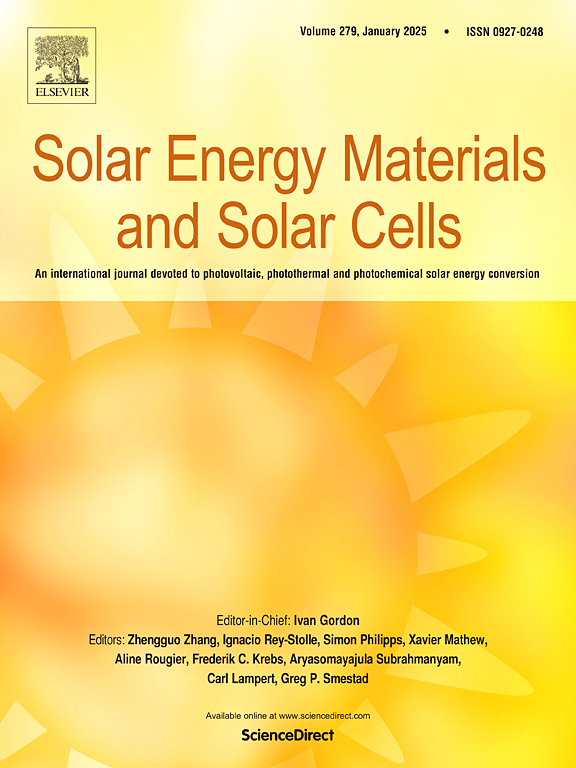Contactless characterization of polarity boundary recombination on silicon heterojunction back contact solar cells
IF 6.3
2区 材料科学
Q2 ENERGY & FUELS
引用次数: 0
Abstract
Silicon heterojunction back contact (HBC) solar cell has an apparent advantage in power conversion efficiency (PCE) due to the efficient surface passivation and the avoided electrode shading. However, such configuration brings an unprecedented carrier recombination loss at the polarity boundary (PB) of selective contacts. PB recombination can make the ideality factor at maximum power point (MPP) evidently exceed 1, resulting in lower pseudo fill factors and PCE. Conventional characterization is confined to electrical contact, not applicable to the unformed cells. Here, a contactless method based on regional minority carrier lifetime measurement is provided, with the monitoring cell comprising separated regions of hole-selective contact (HSC), electron-selective contact (ESC), Gap and HSC + Gap. Its validity and reliability are demonstrated. This research holds guiding significance in quantitatively evaluating PB effect of HBC solar cells.
硅异质结背接触太阳能电池极性边界复合的非接触表征
硅异质结背接触(HBC)太阳能电池由于其高效的表面钝化和避免了电极遮挡,在功率转换效率(PCE)方面具有明显的优势。然而,这种结构在选择性接触的极性边界(PB)处带来了前所未有的载流子复合损失。PB复合可使最大功率点理想因子(MPP)明显超过1,导致伪填充因子和PCE降低。传统的表征仅限于电接触,不适用于未成型电池。本文提出了一种基于区域少数载流子寿命测量的非接触式方法,监测单元由空穴选择接触区(HSC)、电子选择接触区(ESC)、间隙区和HSC +间隙区组成。验证了该方法的有效性和可靠性。本研究对定量评价HBC太阳能电池的PB效应具有指导意义。
本文章由计算机程序翻译,如有差异,请以英文原文为准。
求助全文
约1分钟内获得全文
求助全文
来源期刊

Solar Energy Materials and Solar Cells
工程技术-材料科学:综合
CiteScore
12.60
自引率
11.60%
发文量
513
审稿时长
47 days
期刊介绍:
Solar Energy Materials & Solar Cells is intended as a vehicle for the dissemination of research results on materials science and technology related to photovoltaic, photothermal and photoelectrochemical solar energy conversion. Materials science is taken in the broadest possible sense and encompasses physics, chemistry, optics, materials fabrication and analysis for all types of materials.
 求助内容:
求助内容: 应助结果提醒方式:
应助结果提醒方式:


